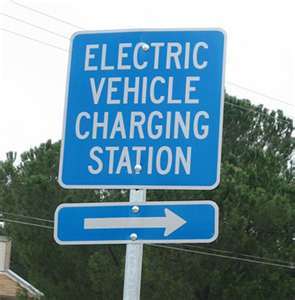Inductive Charging for Electric Vehicles to Gain Traction Transforming Infrastructure Landscape
 |
LONDON--June 5, 2014: Intensive research has boosted the profile of the nascent electric vehicles (EVs) inductive charging market globally. As various verticals such as telecom, industrial automation, and utilities establish their presence in this domain, market participants will increasingly partner with original equipment manufacturers (OEMs) at the testing phase to enhance the value of their products.
New analysis from Frost & Sullivan, Strategic Analysis of Inductive Charging for Global Electric Vehicles (EV) Market, finds that the total market for inductive charging is expected to experience a compound annual growth rate of 126.6 percent from 2012 to 2020, with approximately 351,900 units likely to be sold. Inductive charging will account for 1.2 percent of both public and residential charging in North America and more than 2.6 percent in Europe. Residential charging will be the most popular method, accounting for more than 70 percent of the overall charging.
The market for inductive charging will grow the fastest in Europe, owing to a number of demonstration projects conducted by government bodies, OEMs, and charging station manufacturers.
"OEMs such as Renault, Nissan, Daimler, Volvo, BMW and Toyota are working on the development of inductive charging for future EVs, and more than 10 automakers have announced trial tests," said Frost & Sullivan Automotive and Transportation Senior Research Analyst Prajyot Sathe. "As a result, inductive charging will soon be available in cars either as an additional feature or as an inbuilt feature."
Currently, inductive charging is offered as an aftermarket solution with attractive financing options. Yet, the cost of purchasing and installing an inductive charging solution is approximately 30 percent higher than that of conductive charging. The time taken to charge is also longer, reducing the feasibility of what would otherwise be the most convenient way of charging EVs.
To overcome these challenges, market participants from across the value chain are partnering with OEMs to gain further opportunities for research and development. Large companies are acquiring smaller companies to strengthen their product portfolio.
"While in the short-term 3.3 kilowatts inductive charging will be widely accepted to enable residential and semi-public charging, with time, vehicles will tilt towards 6.6 kW to enable faster charging," noted Sathe. "Inductive charging in stationary applications too will be most sought after in the near-term, whereas dynamic or on-the-move charging will gain traction post-2020."
If you are interested in more information on this study, please send an e-mail to Chiara Carella, Corporate Communications, at chiara.carella@frost.com, with your full name, company name, job title, telephone number, company e-mail address, company website, city, state and country.
Strategic Analysis of Inductive Charging for Global Electric Vehicles (EV) Market is part of the Automotive & Transportation (Frost Automotive) Growth Partnership Service program. Frost & Sullivan's related studies include: Strategic Outlook of Global Electric Vehicle Market in 2014, Outlook of the Global Automotive Industry, Global Investment Opportunities in Electric Vehicles (EVs), and Global Hybrid and Electric Heavy-Duty Transit Bus Market. All studies included in subscriptions provide detailed market opportunities and industry trends evaluated following extensive interviews with market participants.


